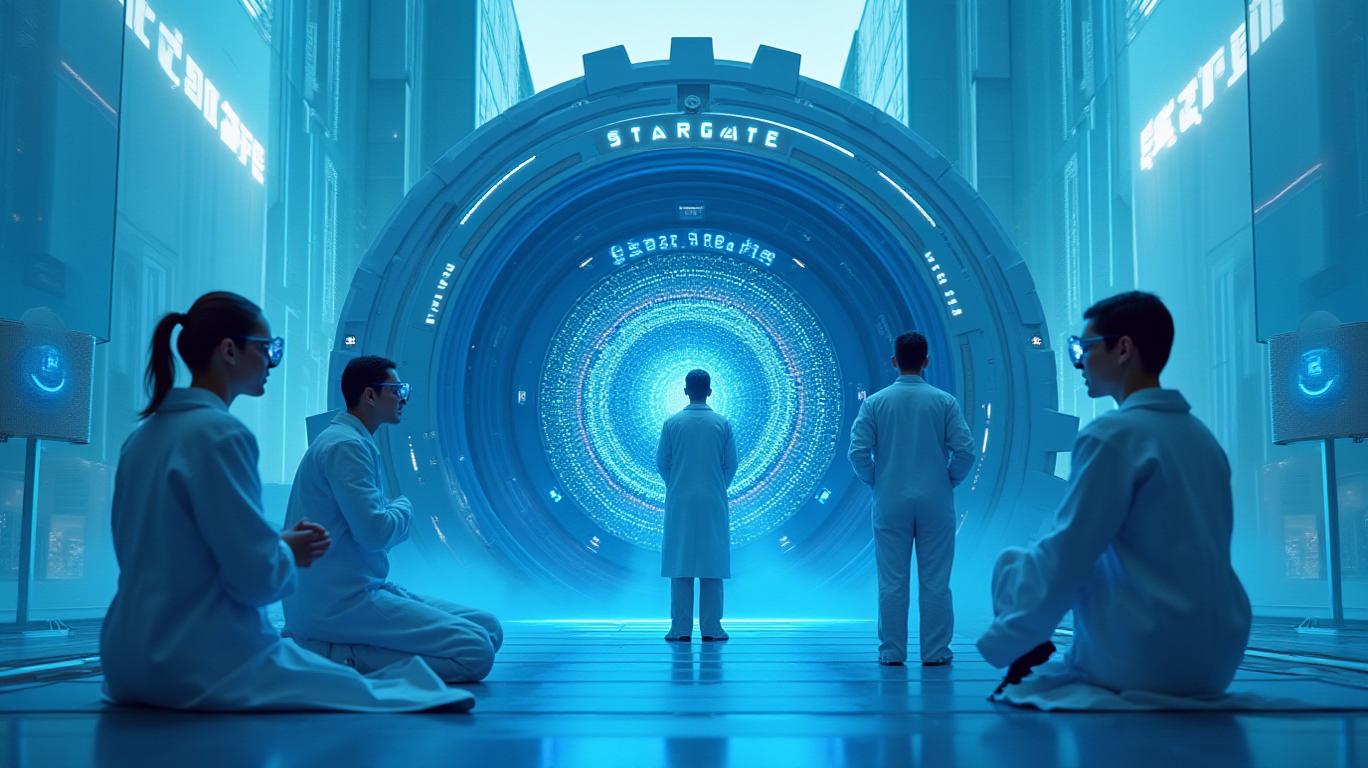OpenAI's Stargate Deal Heralds Shift Away From Microsoft
Clyde MorganThursday, Jan 23, 2025 3:28 am ET
OpenAI's recent announcement of the Stargate project, a $500 billion AI infrastructure initiative, has sparked speculation about a potential shift in the company's strategic partnership with Microsoft. The project, a joint venture with SoftBank, Oracle, and MGX, aims to build massive data centers for AI advancements in the United States. This article explores the implications of the Stargate deal on OpenAI's relationship with Microsoft and the broader AI industry.

OpenAI's growing compute demands and the need for cost-efficient AI infrastructure have driven the company to explore alternatives to Microsoft's Azure cloud. The Stargate project, with its massive investment in AI infrastructure, addresses these challenges and offers OpenAI more control over its resources. The project's structure and funding differ significantly from OpenAI's previous partnership with Microsoft, with implications for OpenAI's future growth and independence.
The Stargate project's structure and funding compare to OpenAI's previous partnership with Microsoft as follows:
1. Partnership Structure:
- Microsoft Partnership (2019-2025): Microsoft was OpenAI's exclusive cloud provider, with a $13 billion investment in OpenAI. This partnership granted Microsoft access to cutting-edge AI software, which it integrated into its applications and services as Copilots. OpenAI, in turn, gained access to vast AI hardware for training larger models and running inference for its API services.
- Stargate Project (2025 onwards): The Stargate project is a standalone company with multiple investors, including SoftBank, Oracle, OpenAI, and MGX. Microsoft is noted as a 'key initial technology partner' but is not an equity funder. This structure allows OpenAI to diversify its partnerships and reduce its dependence on a single entity.
2. Funding:
- Microsoft Partnership (2019-2025): Microsoft invested over $10 billion in OpenAI, with a quarter of OpenAI's revenue flowing back to Microsoft before the Stargate project.
- Stargate Project (2025 onwards): The Stargate project aims to invest $500 billion in AI infrastructure over the next four years, with OpenAI contributing some of its own money. The project's total funding is significantly higher than Microsoft's previous investment, indicating a substantial increase in resources for OpenAI's AI workloads.
The Stargate project's implications for OpenAI's future growth and independence include:
1. Diversified Partnerships: By forming the Stargate project with multiple investors, OpenAI can diversify its partnerships and reduce its dependence on Microsoft. This diversification can lead to more flexibility in decision-making and potentially better terms for OpenAI.
2. Increased Resources: The significant funding for the Stargate project allows OpenAI to invest in its own AI infrastructure, reducing its reliance on external cloud providers like Microsoft. This increased control over resources can enable OpenAI to scale its operations more efficiently and independently.
3. Potential for Homegrown Hardware: While not explicitly stated, the Stargate project could eventually lead to OpenAI developing its own hardware stack, including CPUs, GPUs, and coherent interconnects. This would further enhance OpenAI's independence and potentially reduce costs.
4. Potential for Revenue Growth: With increased resources and independence, OpenAI may be better positioned to commercialize its AI technologies, leading to potential revenue growth. However, it's essential to note that commercializing GenAI has proven challenging for many companies, including OpenAI.
The Stargate project's impact on the broader AI industry includes:
1. Massive investment in AI infrastructure: The project's massive investment in AI infrastructure could drive innovation and growth in the AI industry by fostering collaboration and attracting talent.
2. Efficient use of resources: The project's focus on efficient resource utilization and renewable energy sources could set a new standard for AI infrastructure, encouraging other companies to adopt similar practices.
3. Scalability: The project's scalability allows for the accommodation of growing AI demands, enabling the development of larger and more complex models.
4. Access to leading AI models: By investing in the Stargate project, Microsoft continues to have access to OpenAI's IP, ensuring customers have access to leading AI models on Microsoft platforms and direct from OpenAI.
5. Revenue sharing: The partnership between Microsoft and OpenAI involves revenue sharing agreements that flow both ways, incentivizing collaboration and innovation in the AI industry.
In conclusion, OpenAI's Stargate deal heralds a shift away from Microsoft, with the project's structure and funding offering OpenAI more control over its resources and potentially enhancing its independence. The project's implications for OpenAI's future growth and the broader AI industry are significant, with the potential to drive innovation, improve efficiency, and encourage collaboration among key players. However, the success of these implications depends on various factors, including the project's execution, market conditions, and OpenAI's ability to commercialize its AI technologies effectively.
Disclaimer: The news articles available on this platform are generated in whole or in part by artificial intelligence and may not have been reviewed or fact checked by human editors. While we make reasonable efforts to ensure the quality and accuracy of the content, we make no representations or warranties, express or implied, as to the truthfulness, reliability, completeness, or timeliness of any information provided. It is your sole responsibility to independently verify any facts, statements, or claims prior to acting upon them. Ainvest Fintech Inc expressly disclaims all liability for any loss, damage, or harm arising from the use of or reliance on AI-generated content, including but not limited to direct, indirect, incidental, or consequential damages.

Comments
No comments yet